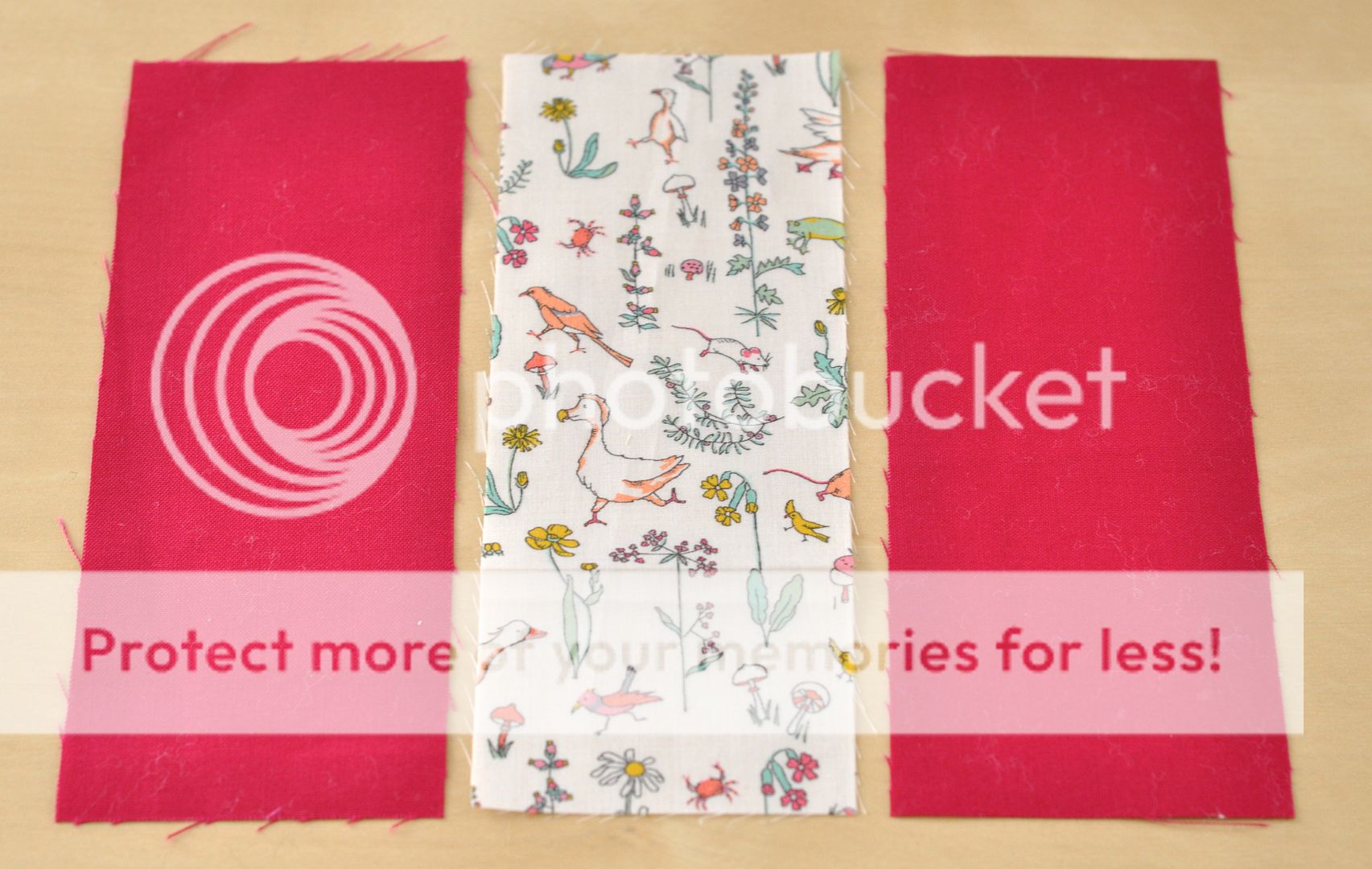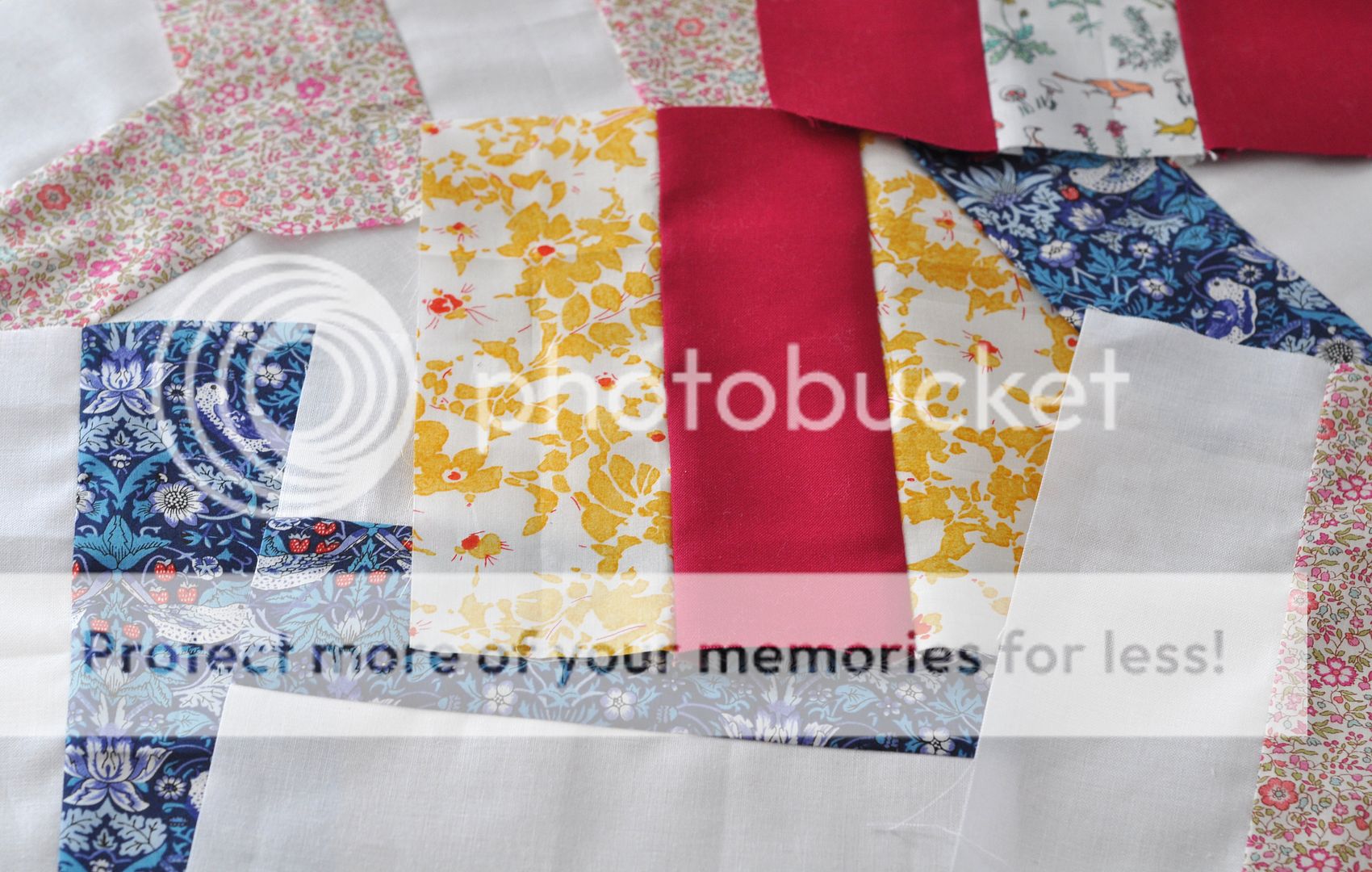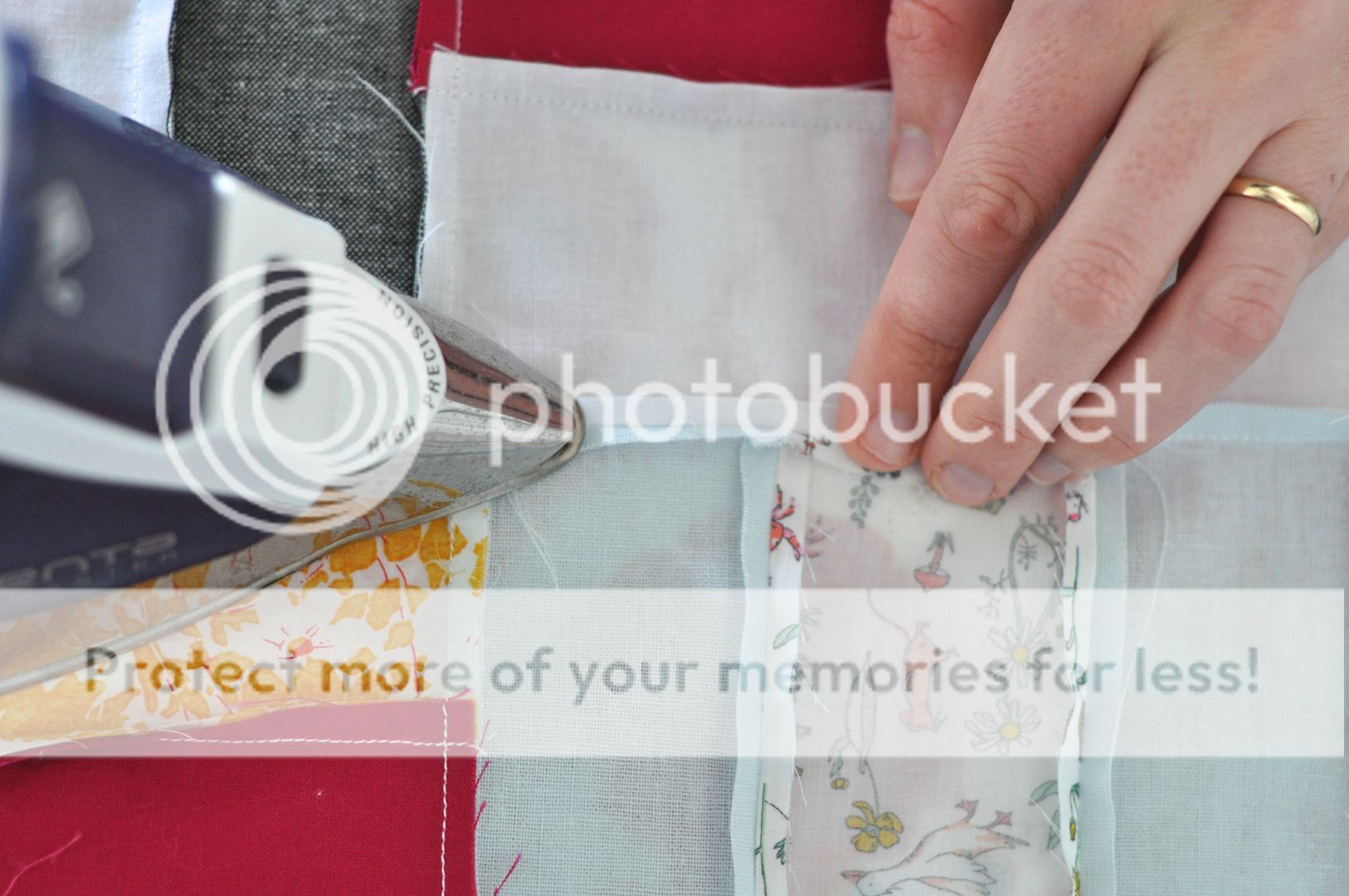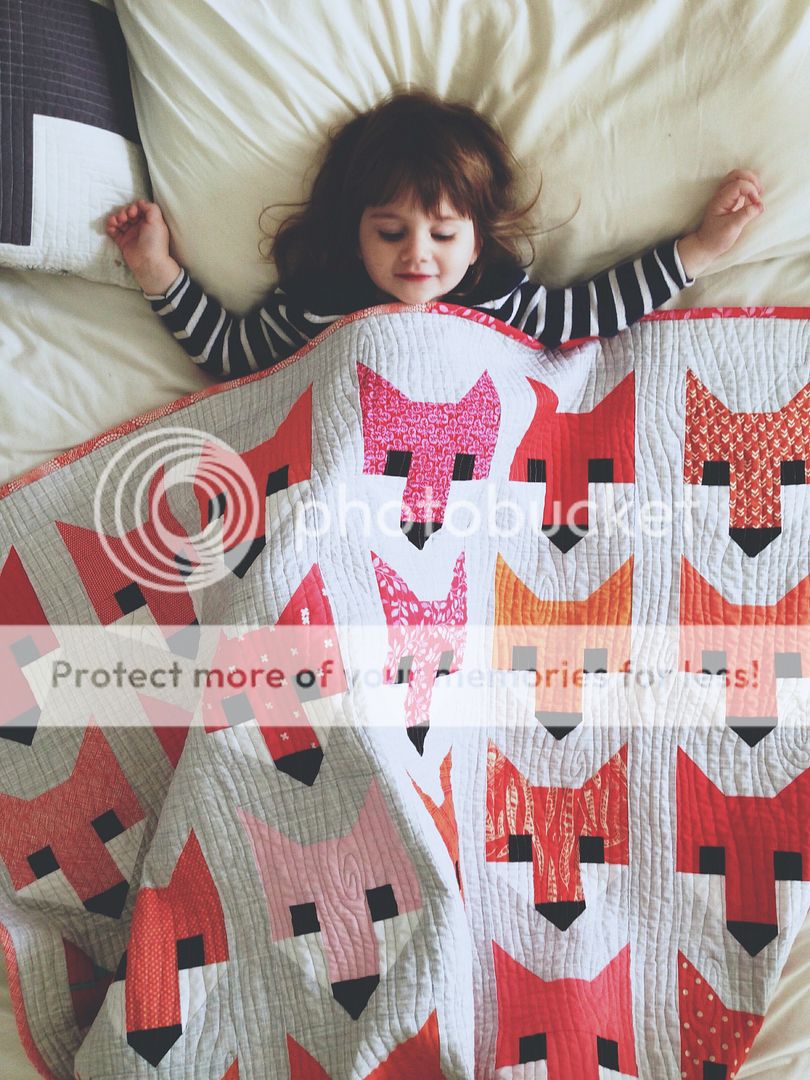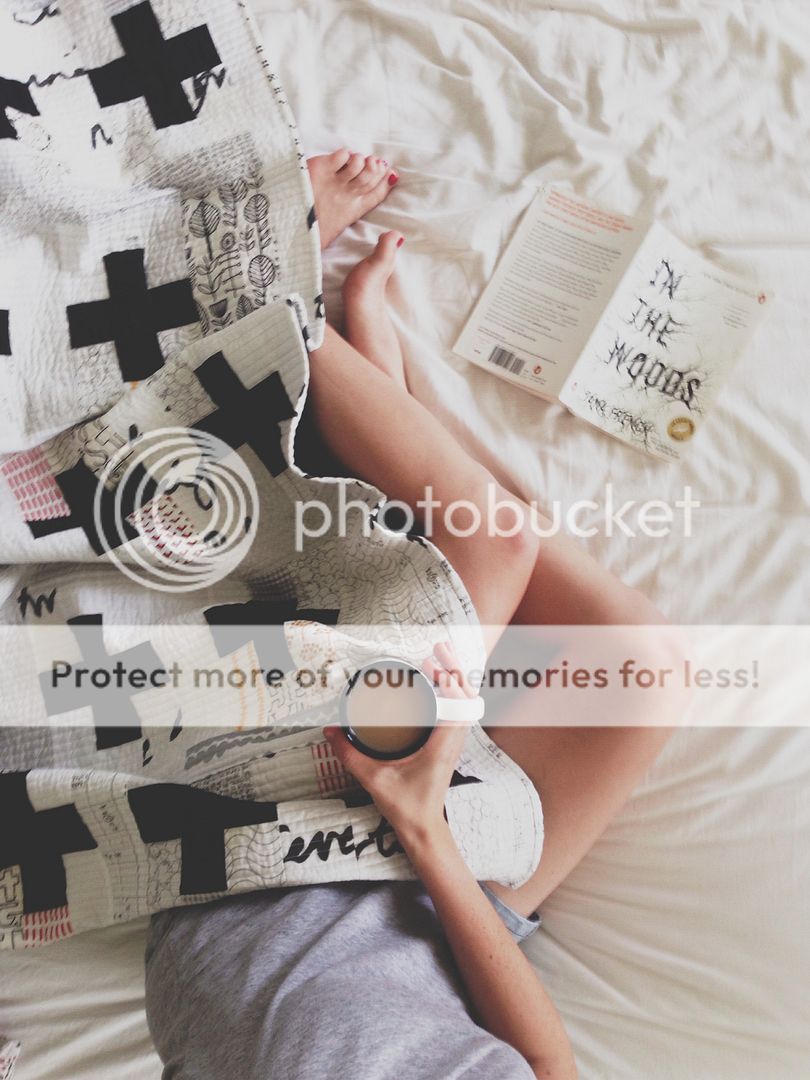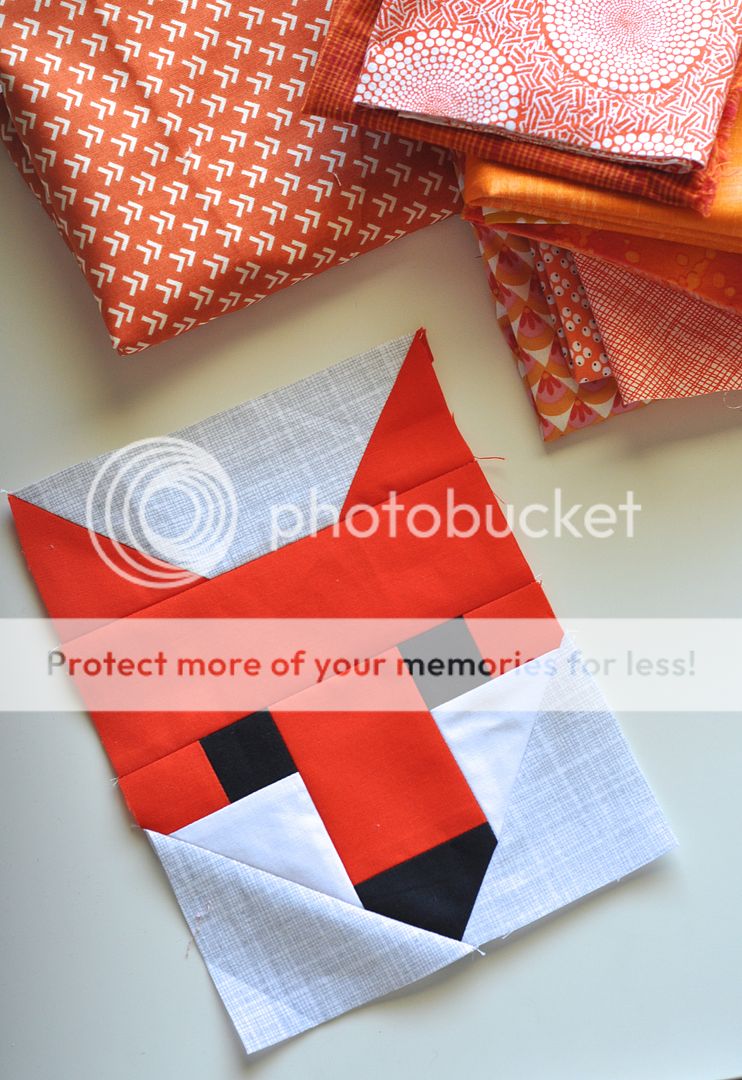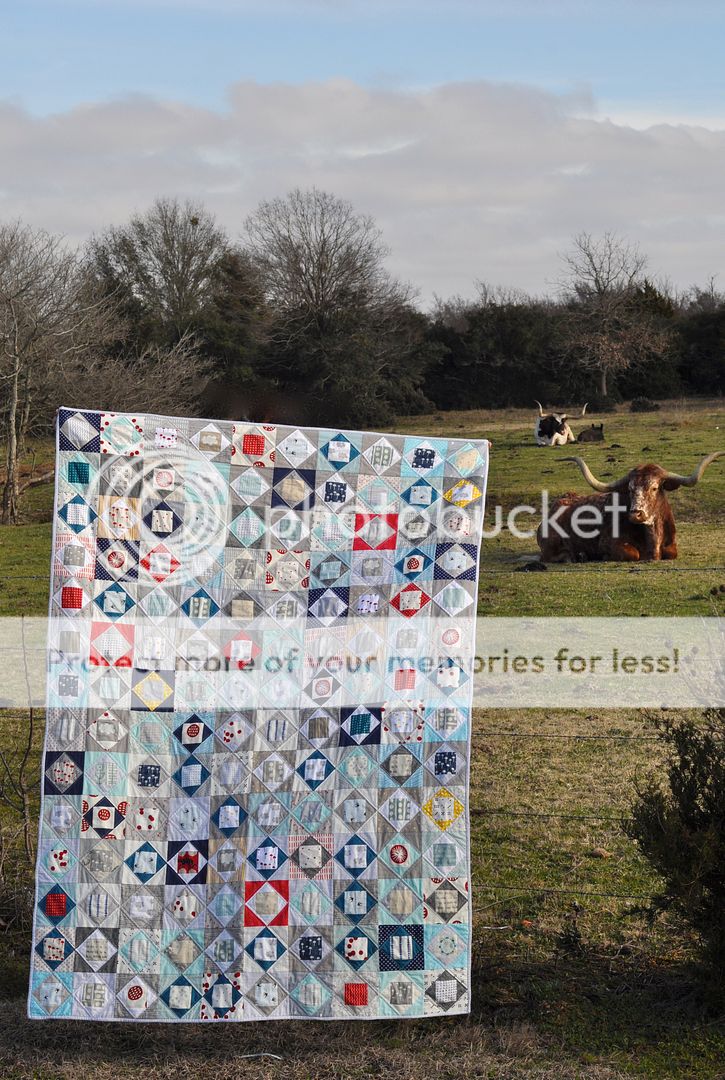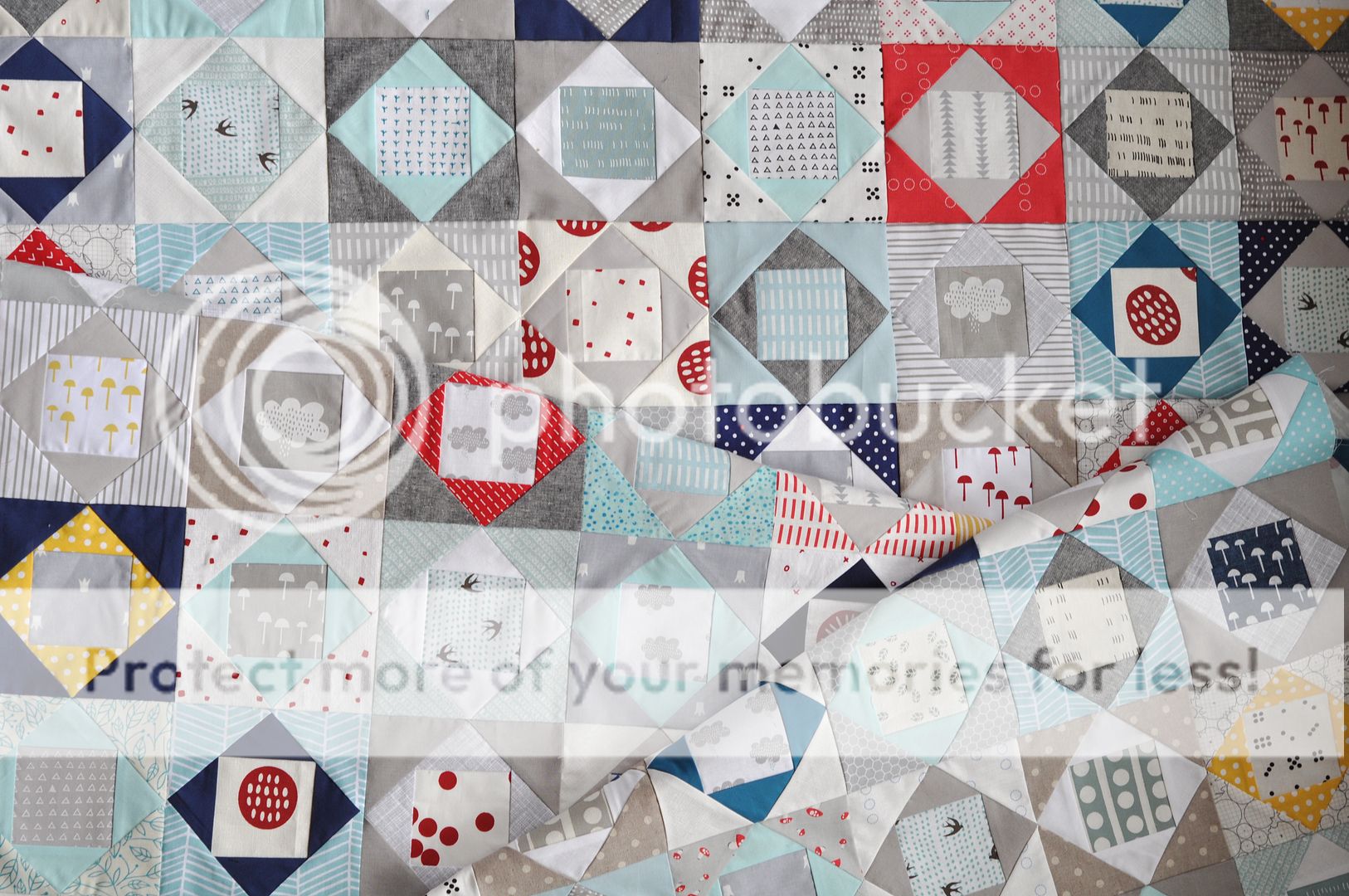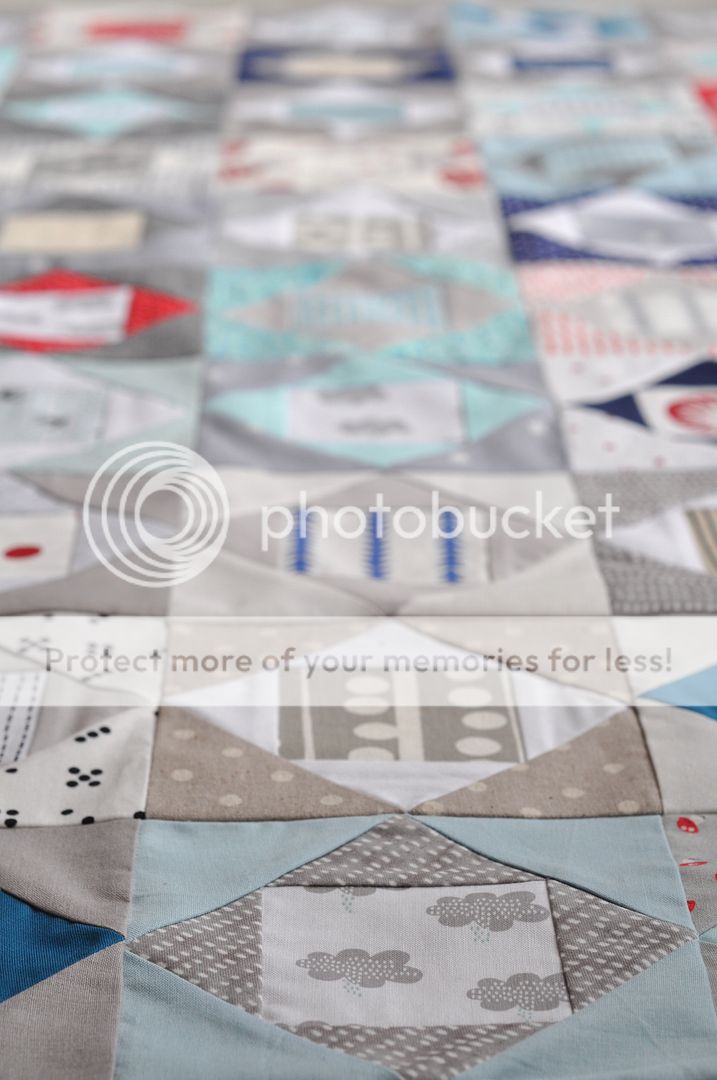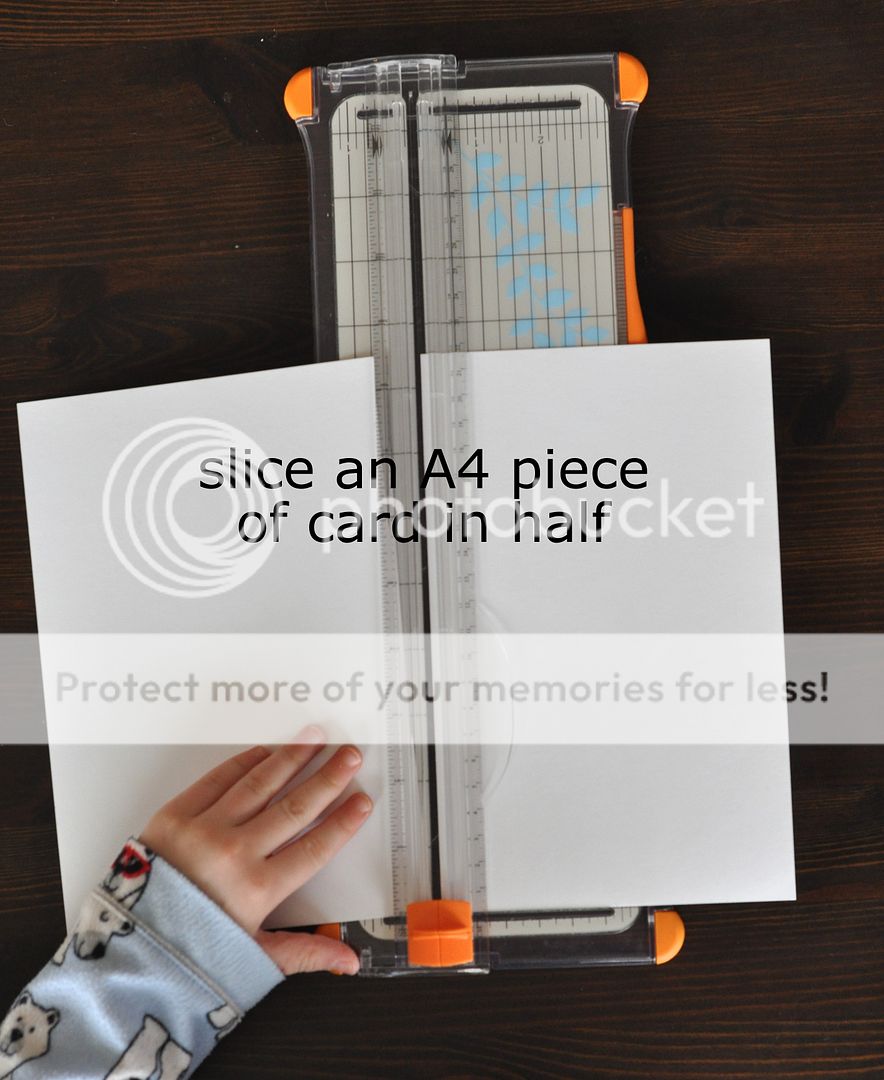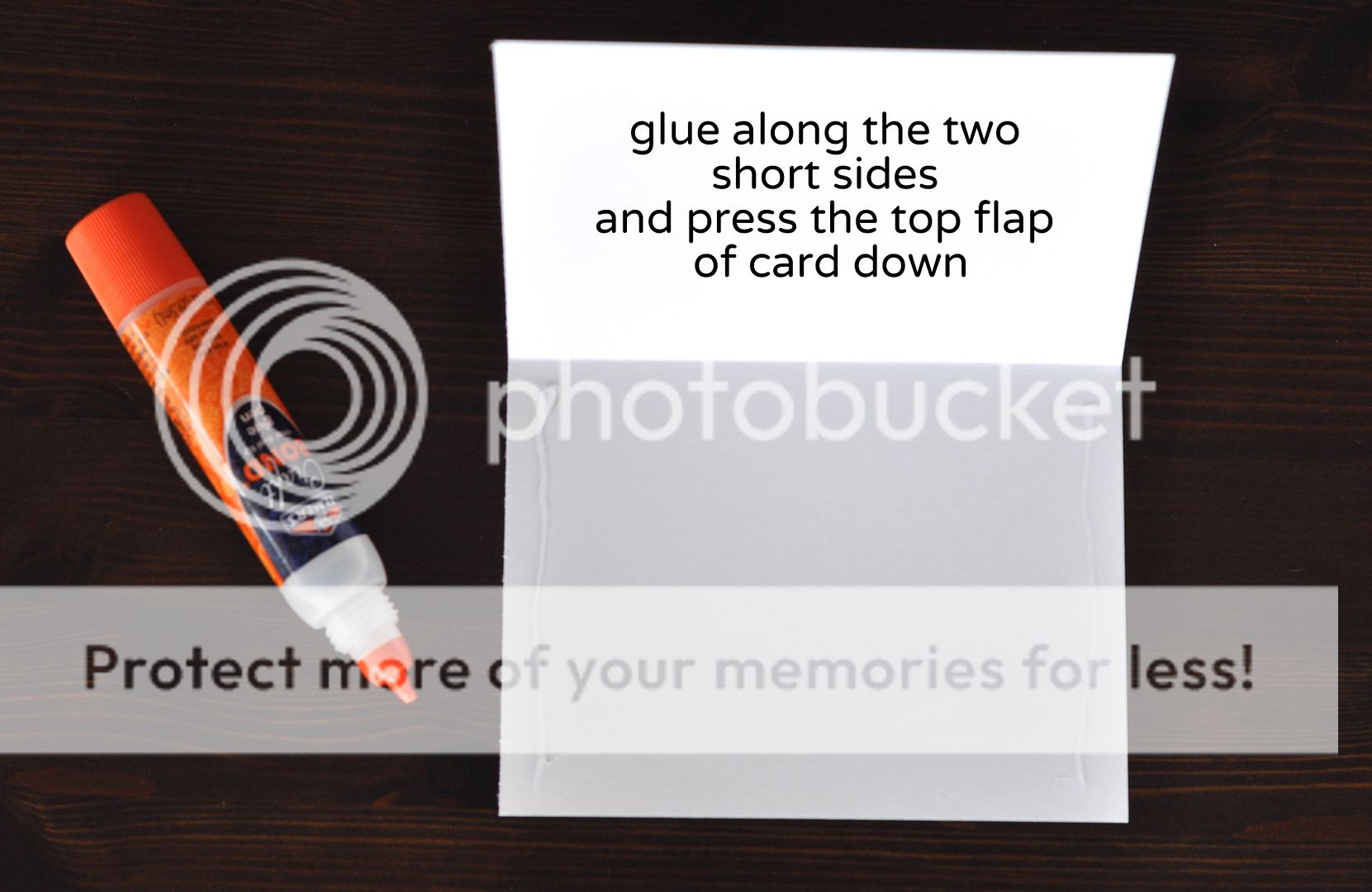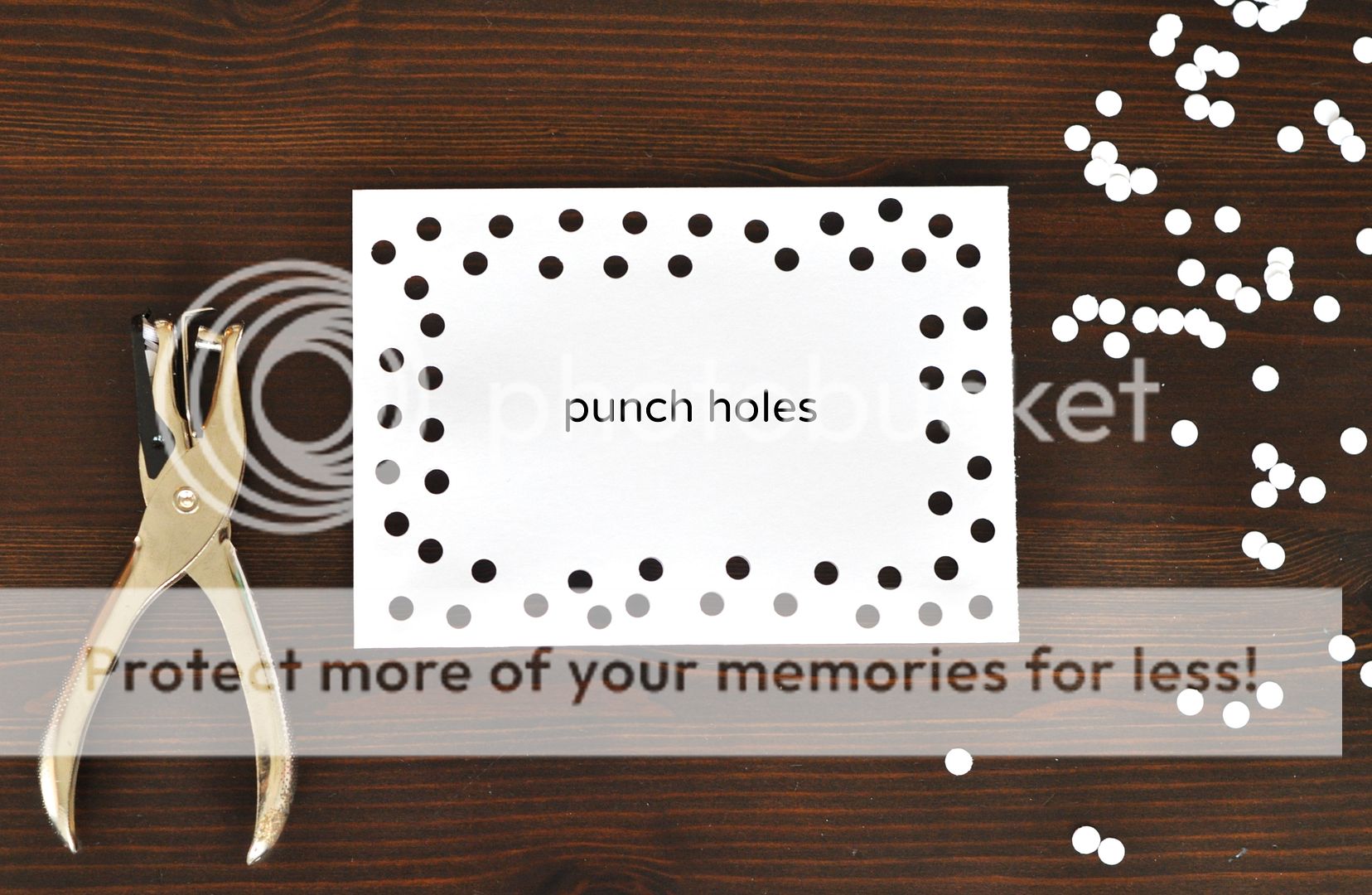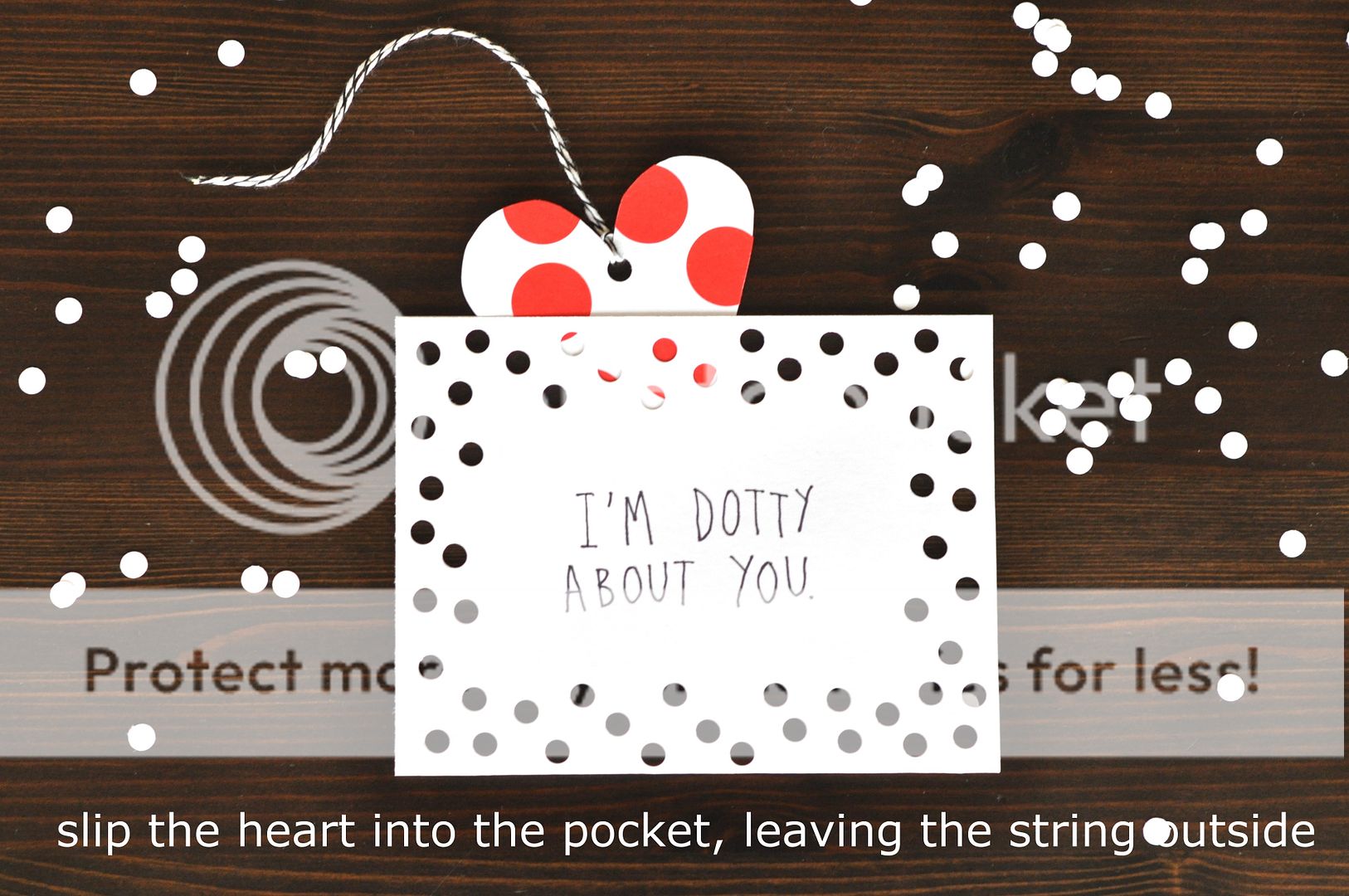This pattern is called "Vertebrae", and comes from a beautiful new book, Quilting From Every Angle, by my lovely friend Nancy Purvis of Owen's Olivia.
It's a book full of fantastic patterns -- all modern and angular, and full of vitality. This one won out first, though, partly because I've always had an interest in interlocking shapes, but mostly because I fell in love with the fact that it is inspired by the vertebrae in our spines. Bones as beauty. Strength and might reimagined in the softness of fabric.

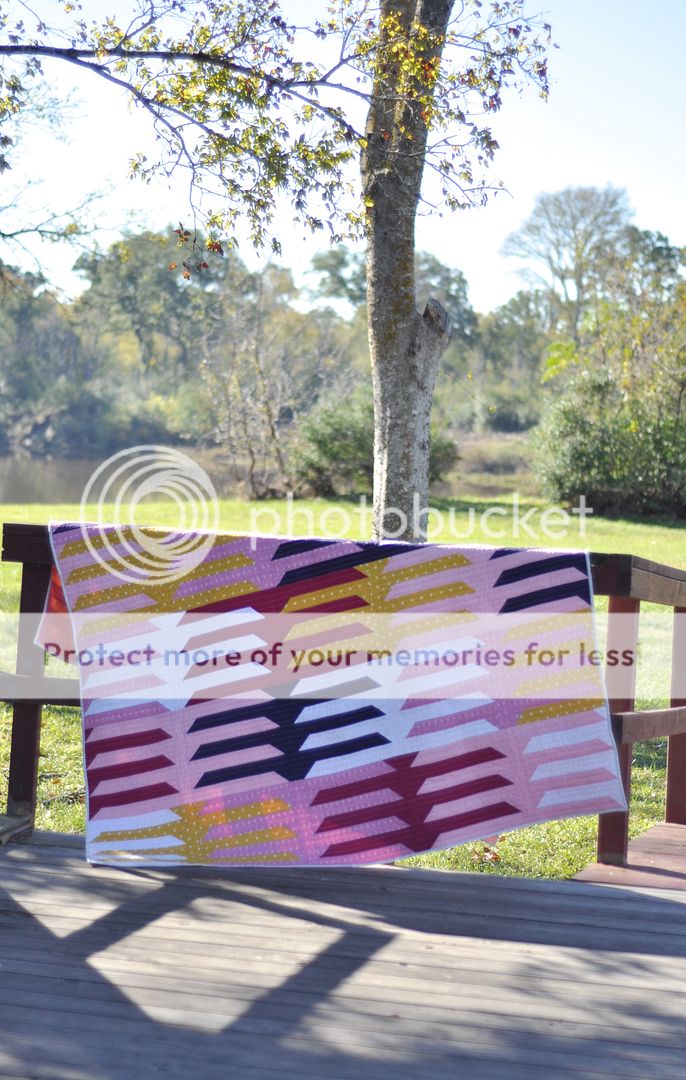
Unofficially, though, I've named this quilt "Arise", because it embodies some of the struggle I've felt this year between the weariness and the hopefulness of rising.
I haven't written much about the word that I was given to guide me this year -- mostly because it's been a word that has torn me down before it has rebuilt me, and the rebuilding is still very much in progress. ARISE. A word of hope, of action, of standing up, of speaking up. A word that acknowledges the receding darkness, even as the pale colours of the new morning appear in the sky. A rather formal and grandiose word, but one that you can achieve quite humanly simply by choosing to roll out of bed each morning rather than rolling your head under a pillow and muffling out the world.
As I was piecing this quilt, there was one particularly hard week when it was, in fact, very difficult to even roll out of bed. Hope, for several reasons, felt lost. I dropped all the extra commitments I could -- with the exception of making this quilt. And even lacking the brain-power and heart-power to do very much at all, my fingers, my bones, seemed to still have some weak little strain of hope left in them. Enough to sew. Enough to call some wonderful friends. And eventually, enough to get back up -- in spite of me, even -- when there was no real decision or feeling to do so.
And that's what I hope this quilt says: that underneath the layers of our thoughts and our feelings, I believe hope is present in our bones. In the body -- in all senses of that word. And that even when we can't see it, name it or feel it, that hope will help us to rise.
Here are my two assistants, who are walking, talking little incarnations of the word hope:


11/11- Hillary Goodwin of Entropy Always Wins
11/12- Karen Lewis of Karen Lewis Textiles
11/13- Anna Graham of Noodlehead
11/16- Rachel McCormack of Wooden Spoon Quilts
11/17- Tara Larson of Rad & Happy
11/18- Jennifer Mathis of Ellison Lane
11/19- Holly Hughes of Holly Gets Quilty
11/20- Nicole Daksiewicz of Modern Handcraft
11/23- Pat Bravo of Pat Bravo Fabric Design and Jesse Maloney of Art School Dropout
11/24- Astrid of Red Red Completely Red
11/25- Holly DeGroot of Bijou Lovely
11/26- Christopher Thompson of The Tattooed Quilter
11/27- Spoonflower
And, for all of you who are ready to sew up your own versions of these patterns, you can find the book on amazon here, and signed by Nancy here.

It's a book full of fantastic patterns -- all modern and angular, and full of vitality. This one won out first, though, partly because I've always had an interest in interlocking shapes, but mostly because I fell in love with the fact that it is inspired by the vertebrae in our spines. Bones as beauty. Strength and might reimagined in the softness of fabric.


Unofficially, though, I've named this quilt "Arise", because it embodies some of the struggle I've felt this year between the weariness and the hopefulness of rising.
I haven't written much about the word that I was given to guide me this year -- mostly because it's been a word that has torn me down before it has rebuilt me, and the rebuilding is still very much in progress. ARISE. A word of hope, of action, of standing up, of speaking up. A word that acknowledges the receding darkness, even as the pale colours of the new morning appear in the sky. A rather formal and grandiose word, but one that you can achieve quite humanly simply by choosing to roll out of bed each morning rather than rolling your head under a pillow and muffling out the world.
As I was piecing this quilt, there was one particularly hard week when it was, in fact, very difficult to even roll out of bed. Hope, for several reasons, felt lost. I dropped all the extra commitments I could -- with the exception of making this quilt. And even lacking the brain-power and heart-power to do very much at all, my fingers, my bones, seemed to still have some weak little strain of hope left in them. Enough to sew. Enough to call some wonderful friends. And eventually, enough to get back up -- in spite of me, even -- when there was no real decision or feeling to do so.
And that's what I hope this quilt says: that underneath the layers of our thoughts and our feelings, I believe hope is present in our bones. In the body -- in all senses of that word. And that even when we can't see it, name it or feel it, that hope will help us to rise.
Here are my two assistants, who are walking, talking little incarnations of the word hope:


Now, some very lovely people have also made quilts from Quilting From Every Angle, and written about them without feeling the need to give sixteen shades of meaning for each word. You can find their beautiful interpretations of the patterns from the book by following the links below:
11/10- Michelle Wilkie of Factotum of Arts
11/12- Karen Lewis of Karen Lewis Textiles
11/13- Anna Graham of Noodlehead
11/16- Rachel McCormack of Wooden Spoon Quilts
11/17- Tara Larson of Rad & Happy
11/18- Jennifer Mathis of Ellison Lane
11/19- Holly Hughes of Holly Gets Quilty
11/20- Nicole Daksiewicz of Modern Handcraft
11/23- Pat Bravo of Pat Bravo Fabric Design and Jesse Maloney of Art School Dropout
11/24- Astrid of Red Red Completely Red
11/25- Holly DeGroot of Bijou Lovely
11/26- Christopher Thompson of The Tattooed Quilter
11/27- Spoonflower
And, for all of you who are ready to sew up your own versions of these patterns, you can find the book on amazon here, and signed by Nancy here.







